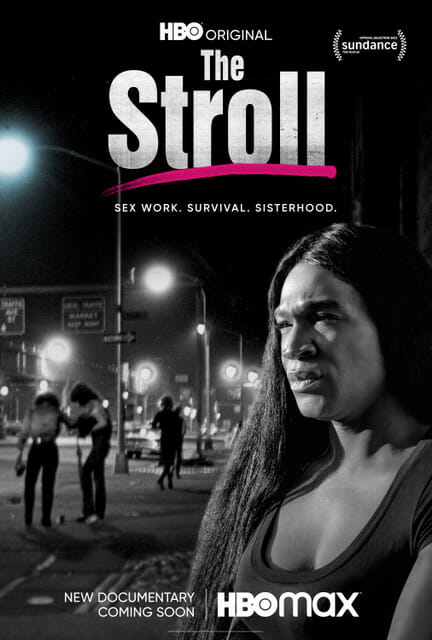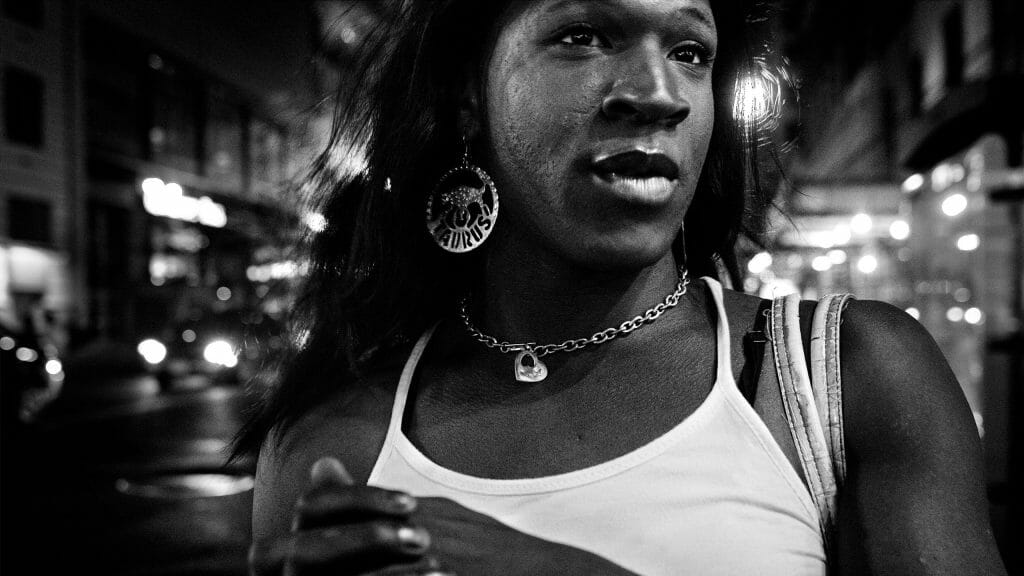The HBO documentary The Stroll debuted at Sundance last week, but before it had its big world premiere, co-directors Kristen Lovell and Zackary Drucker joined GLAAD at a special panel at the Park City-based fest titled “The Stroll to Sundance: How One Documentary Came to Be and a Path to Reclaiming Transgender Narratives”.
When Lovell moved to New York City in the ‘90s and began to transition, she was fired from her job. Like many transgender women of color from the era, she began sex working in the Meatpacking District to survive.
Trans women congregated in the area called “The Stroll” (hence the title) and forged bonds as sisters to protect each other from harassment and violence. They built community. As much as The Stroll is a film about trans women navigating life, it is also a startling account of gentrification. Despite the forces that threatened their survival, Lovell and her sisters fought back, helping strengthen an ongoing civil rights movement.
The Stroll marks both Lovell and Drucker’s feature film directorial debut and after GLAAD’s Alex Schmider introduction on the importance of trans community storytelling and pushing forward to create systemic change, the directing pair talked about what it’s like to have the film premiere at Sundance.
“It’s surreal,” Lovell told GLAAD’s Anthony Allen Ramos during the panel. “When you have these ambitions and aspirations, we don’t know if they’re achievable and so when finally comes you’re just like… “damn” [laughs].”

Lovell and Drucker are well-versed with trans history – and have lived it – so to have them both directing the documentary adds a layer of authenticity to the storytelling.
Lovell who at once lived around the corner from The Stroll in a homeless youth center, the Covenant House. “There were a lot of street kids,” Lovell remembered. “I was like a mother bear to all the queer kids that came into the shelter. There was a hodgepodge group of us, and we would all go down to the Meatpacking District to survive. We needed food, clothes, and we built this little family and sisterhood.”
“The stroll is really any area where sex workers are on the street,” explained Drucker. “It could be in any city. There are strolls in every borough in New York and this particular stroll seems to have been there since the late ‘70s all the way to the 2010s.”
“Even before that,” Lovell pointed out. “When you think about the history of New York City, Times Square and Hell’s Kitchen, that all is like one big strip. Some of our leaders like Sylvia Rivera and Marsha P. Johnson started their sex work journeys in Times Square and then migrated down into the Meatpacking District.”

Drucker hopes that The Stroll helps destigmatize sex work. “You can look at newspapers from the 18th century in early America, and there are reports of people who were cross-dressing; people who are living as [transgender], who had to survive, in the underground economy,” she said. “That’s something that trans people have always done to survive. As our community started to gain more visibility 10 years ago, there was an effort to undo the trope of the trans sex worker… it was the only trans character you ever saw in film and TV.”
Lovell chimed in, “You could watch a movie and there’s that one alleged or supposed trans person there just like stand in a corner acting erratic or something.”
Drucker stresses the importance of how the trans community sees themselves reflected in culture. “So many trans people from our generation and older are looking into the void,” she said.

The Stroll allows Lovell and Drucker to pay tribute to a point in time, a place, and the people who made it a community. The documentary, through their lenses, centers on the multi-dimensional experiences of trans women, not only highlighting the hardships, but spotlighting the joy, love, resilience, and sisterhood found im surviving a society accepting and often cruel.
Lovell sensitively and honestly interviews subjects Ceyenne Doroshow, Tabytha, Cashmere, Carey, and others who also makes an appearance in interviews to remind the audience of her own personal relationship to the Stroll and the people surrounding it.
“Kristen is the anchor for the viewer,” Drucker said. “You begin to understand her story as well through the interactions that she’s having with our subjects. There’s so many more stories that are not in the film and there’s so many directions that we went in.”

The Stroll also reminds us that the trans community has always stepped in and advocated for the LGB community, especially in crisis.
“I’ve been having lots of conversations about crabs in a barrel,” said Lovell. “A crab in a barrel is when you have a group of people — particularly marginalized groups of people, — all trying to ascend, and get out of that barrel. Then you have the others that are at the bottom of the barrel. They are also trying to ascend or are happy at the bottom and trying to drag the other ones down, not allowing them to escape. We’ve reached this point of visibility, so everybody is vying for attention. When people want to be seen and heard it ultimately becomes breaking down the other to uplift.”
“It’s tough” Drucker said. “Scarcity mentality is very real and it is pervasive. It actually happens everywhere. It’s this white supremacist mentality of if the other is represented that takes away something from the white patriarchal status quo. And yet, progress is truncated. It’s not graceful. It doesn’t happen easily and it’s not swift… but we’re starting to see signs of systemic inclusion. That’s incredible.”
The Stroll is set to premiere on HBO later this year.













